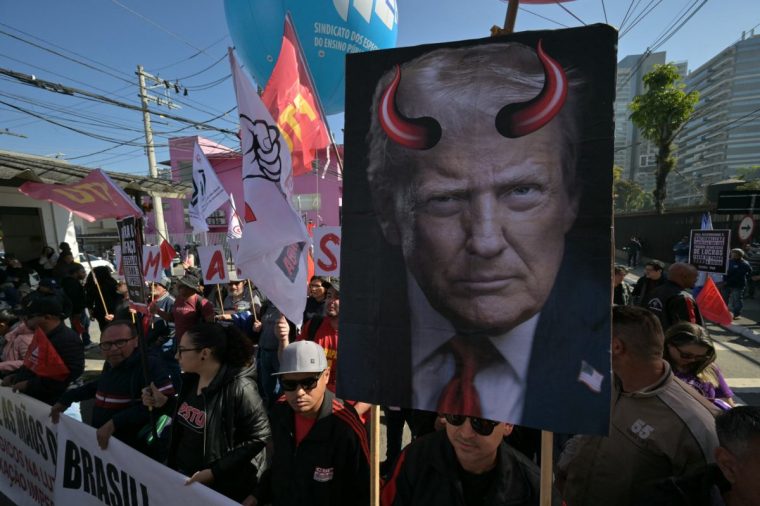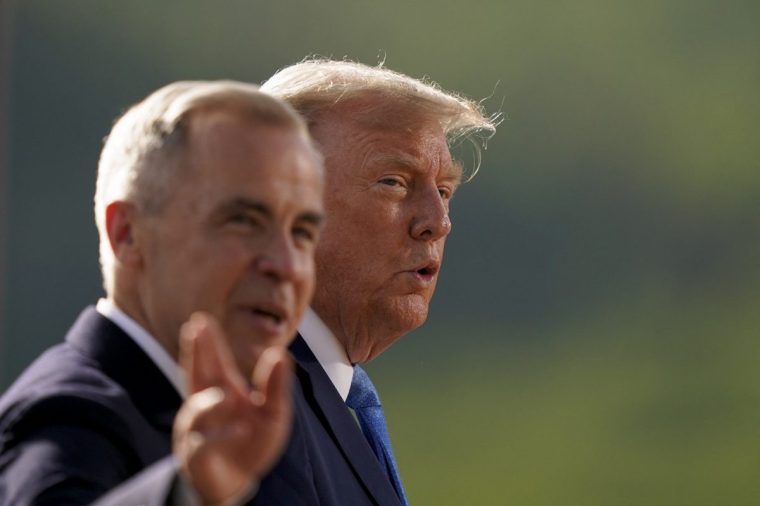Polls show the American public is not happy with Trump’s first six months in office
There’s nothing that disrupts financial markets more than uncertainty. Some surprises, like a lopsided trade deal, can be factored in. But the chaos and doubt created by a global superpower issuing one set of rules only to update them with no warning is too much for even the smartest AI-assisted algorithms.
That is what happened after Donald Trump announced new tariffs on up to 70 countries overnight, ranging from 10 per cent imposed on the UK to 35 per cent for Canada (more than Mexico’s 25 per cent and China’s 30 per cent) and a whopping 50 per cent for Brazil.
The markets have reacted as expected. The Stoxx 600, which is made of European stocks, dropped to 1.3 per cent, its lowest in a month. In the US, all three major indexes – the Dow Jones Industrial Average, the S&P 500, and the Nasdaq – were down sharply.

As Jonathan Pingle, a senior US economist at UBS, a major international bank told The Wall Street Journal: “Everyone is trying to understand what direction the economy is taking.”
There appears to be little rhyme or reason behind Trump’s numbers. Brazil’s 50 per cent import tax comes after the nation apparently upset Trump by prosecuting former leader, Jair Bolsonaro, whom he was once fond of, for attempting a coup not entirely dissimilar to the one tried by Trump after he lost to Joe Biden in 2020.
India, whose leader Narendra Modi is claimed to be a friend, was landed with a 25 per cent tariff. One apparent crime committed by Modi is the decision to continue buying oil from Russia in defiance of US wishes, an area where Trump has conveniently ignored the many decades that the US bought petroleum from other autocracies, such as Saudi Arabia.
Syria, a newly fledgling democracy, has also been handed a stinging 41 per cent import tax despite Trump praising its leader Ahmed al-Sharaa after meeting him in the Middle East, proving that very few nations are safe from his wrath, whatever is fuelling it.

If there is a secret pattern to all of this, it is that it feels incredibly similar to the ill thought out “liberation day” tariffs announced in April by Trump that felt so chaotic they could have been made up on the spot. On that occasion, the president’s allies announced his actions would see America secure “90 trade deals in 90 days”. That, of course, did not happen.
Even if you include the light-on-detail framework Trump touted with the UK in June (where he said the UK would be safe from further tariffs “because I like them”), the US has managed less than 10 trade deals, the most important of which was announced this week with the EU.
Perhaps most importantly, this news will do nothing for Trump’s popularity in the US. For all his claims to the contrary, polls show the American public is not happy with his first six months in office.
A recent poll by Reuters and Ipsos found his approval was down to 40 per cent, the lowest for his second term. A separate survey by CBS News and YouGov found that 50 per cent of Americans said Trump’s policies were making them worse off financially. With inflation still steadily growing, 62 per cent said Trump’s policies of tariffs were making food and groceries more expensive.
For Democrats seeking to make ground and retake the House of Representatives in the 2026 midterms, this should be an area they hone in on with a laser focus.
Trump bungling the Jeffrey Epstein affair and the 60,000 people killed in Gaza by the US backed Israeli military can dominate media headlines, but it is the economy, the cost of living, and ultimately whether people feel financially secure that have long been shown to be the crucial issues on which voters cast their ballot.
It is especially important because Trump was given a second term in large part because he was seen as the person better equipped to handle the economy. And while the impact of the tariffs may not be fully felt, eventually they will be passed onto US consumers leading to them paying higher prices. In the coming weeks and months Americans can expect to have “sticker shock” on the cost of cars to the price of meat.
Trump came into office with an economy that, if not perfect, was in pretty good shape. Yet because of his desire to rip up the old order, both in terms of trade and strategic alliances, America and the rest of the world are now confronted by a world where nobody appears sure what happens next.
